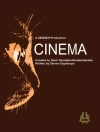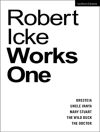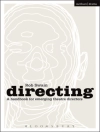In ‘Sleight of Hand: A Practical Manual of Legerdemain for Amateurs & Others, ‘ Edwin Thomas Sachs presents a comprehensive guide to the art of magic, primarily focusing on sleight of hand techniques. Written in a clear and engaging style, the book demystifies the intricacies of manipulation, misdirection, and performance, allowing readers to develop their skills from fundamental tricks to more complex illusions. The manual is steeped in the context of late 19th-century magic, a time when the art form was gaining significant popularity, yet it retains a timeless quality, appealing to both novices and seasoned performers alike. Edwin Thomas Sachs, a prominent magician and author, was deeply immersed in the world of performance magic, influenced by the burgeoning Victorian fascination with illusion. His professional background as a magician and his dedication to the craft equipped him with unique insights into the psychology of performance and audience engagement, which is reflected in his detailed instructions and anecdotes throughout the manual. This book is highly recommended for anyone interested in the magical arts, as it not only serves as an instructive resource but also enriches the reader’s appreciation for the nuances of magic. Whether you aim to impress at social gatherings or simply explore a new hobby, Sachs’ manual provides the essential tools to unlock your potential as an amateur magician.
Mengenai Pengarang
Edwin Thomas Sachs (1856–1910), a luminary in the world of conjuring literature, is best remembered for his seminal work ‘Sleight of Hand: A Practical Manual of Legerdemain for Amateurs & Others’, first published in 1885. This tome is regarded as a cornerstone resource for magicians and remains a highly referenced and admired text in the field of magic literature. Sachs, who meticulously melded his passion for magic with a refined writing ability, imparted a comprehensive guide that has schooled generations of magicians in the art of prestidigitation. His literary style is characterized by detailed descriptiveness and a didactic approach, intending to equip readers with the ability to perform magic not only with skill but also with an understanding of the subtleties and psychological nuances necessary for convincing illusions. Sachs’ influence extends beyond this manual, as he was esteemed among his contemporaries for his expertise and contributions to the magical community, helping to shape standards in the performance and theory of magic. The enduring relevance of ‘Sleight of Hand’ underscores Sachs’ mastery and his commitment to the craft, securing his place in the pantheon of great magical authors.












